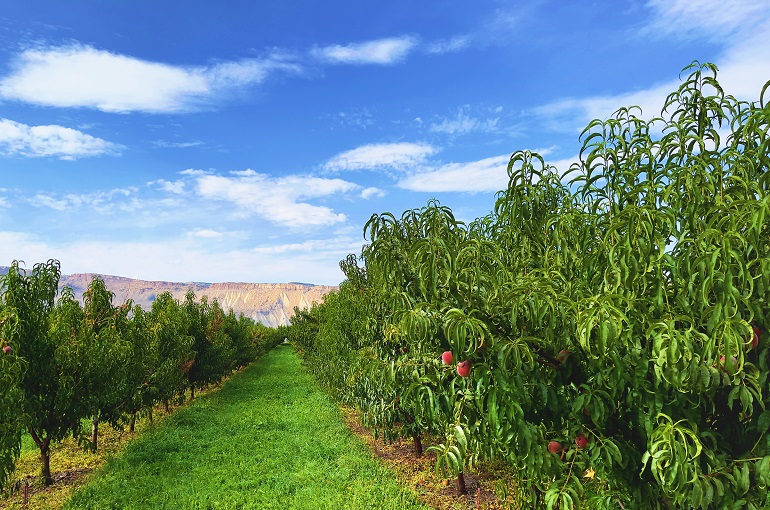Propagation and Pollination of Peach trees

This post is also available in:
This post is also available in:
![]() Español (Spanish)
Español (Spanish) ![]() Français (French)
Français (French) ![]() Deutsch (German)
Deutsch (German) ![]() हिन्दी (Hindi)
हिन्दी (Hindi) ![]() 简体中文 (Chinese (Simplified))
简体中文 (Chinese (Simplified)) ![]() Ελληνικά (Greek)
Ελληνικά (Greek) ![]() Português (Portuguese (Brazil))
Português (Portuguese (Brazil))
How to Propagate Peaches
Peach trees can be propagated by seed, cuttings (use of hardwood cuttings), grafting, and budding. However, among these options, commercial farmers often use only the last two since they assure variety purity, good success rate, plant health and early fruit production. The peach tree is mainly propagated by T-grafting of the desired (main) variety (scion) on 1-2 years old rootstocks. Farmers mostly use peach or peach x almond hybrids as rootstocks, most often coming from meristematic tissues grown in the laboratory.
Grafting is a commonly used technique through which we join together parts from two different plants so that they will grow as a single plant. The upper part of the first plant is called a scion and grows on the root system of the second plant, called the rootstock. The grafted trees combine important characteristics of both the scion and the rootstock (like disease resistance, tree size, etc). Producers may perform T-grafting early in spring, as soon as the bark detaches easily. The most suitable period, however, is summer or autumn.
How to pollinate Peach Trees
Almost all commercially cultivated peach varieties are self-fertile. However, some exceptions, like the J.H. Hale variety, require cross-pollination to produce good yields. The same is true for nectarines. However, in this case, the growers should check if the self-infertile variety J.H Hale was also used as a parent. In this case, this specific variety needs to be planted at a close distance to compatible pollinizer varieties (1 or more). In general, regardless of the variety used, cross-pollination may increase the final yield a bit. Still, in general, a single peach variety can successfully be planted in large blocks.
In the case a self-infertile variety is used, the farmer should consult the local agronomist and plant nursery for compatible pollinizer peach varieties to plant in his/her field. For a higher success rate, the pollinizer peach varieties’ trees should be 15-25% of the total number of trees in the orchard. Most producers prefer to plant one row of the pollinizer variety for every three rows of the main variety to facilitate cross-pollination. Introducing honey bee colonies (in collaboration with a beekeeper) or/and protecting wild pollinators will help cross-pollination. To protect the bees (and other beneficial insects), it is vital not to spray with pesticides during the blooming period of the peaches (especially with nonselective products). The pollination efficiency may drop when the weather is cold, rainy, cloudy, or windy since the bees do not forage well in such conditions. The peaches may fail to bear fruits in case of frost during flowering (a temperature of -1 °C or 30 °F will kill the flowers).
References
- https://extension.psu.edu/pollination-requirements-for-various-fruits-and-nuts
- https://extension.umd.edu/resource/tree-fruit-pollination
- https://polk.extension.wisc.edu/files/2014/02/Rootstocks-for-Fruit-in-WI-A3561.pdf
- https://hort.ifas.ufl.edu/database/lppi/sp301.shtml
Peaches Facts, Uses, Nutritional Value and Health Benefits
Peach Tree Information, Variety Selection, and Environmental Requirements
How to Grow Peaches from Seed (Stone)
Growing Peach Trees for Profit – Peach Farming Guide
Peach Tree Soil Requirements, Soil Preparation, and Planting
Propagation and Pollination of Peach trees
How to Train and Prune Peach Trees
Irrigating Peach Trees – How much Water do Peach Trees need?
Peach Tree Fertilizer Requirements








































































